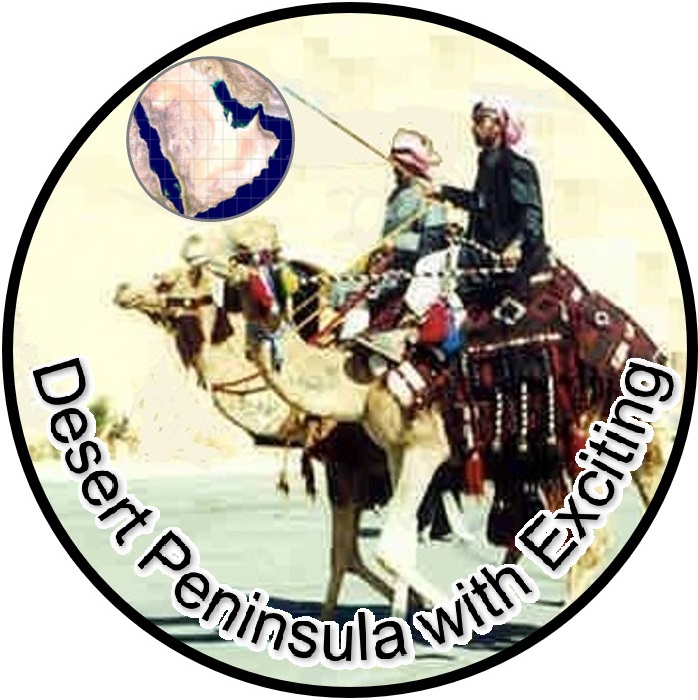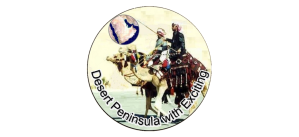My Knowledge and Experience of This Peninsula

日本でのアラビア半島の概念は「産油国」と「イスラーム」でしたが、ドバイ等の国際的な観光施設や海上や沙漠の観光ツアーの充実に加えて日本人への積極的な観光誘致などで日本国内でのアラビア半島への理解も最近は少し変わって来ています。「ドバイ日航機ハイジャック事件」が起きた1973年7月当時、筆者はアブダビで沖合原油生産施設建設に携わっていました。心配はしていても知人や親族で「アラブ首長国連邦やドバイがアラビアの何処なのか」を知っている人が殆どいませんでした。その事を思い出すと、今昔の感があります。ちなみに当時のドバイ空港は建築家丹下健三氏の設計と聞いていました。
The concept of the Arabian Peninsula in Japan had been only “oil-producing countries” and “Islam”. However, the native governments such as Dubai has made tremendous effort to enhancing international tourism and/or sightseeing tours either in the sea or in the desert. Also, applying the privilege of no visa especially for Japanese, Dubai has actively been attracting to Japanese tourists. The understanding of the Arabian Peninsula in Japan has gradually changed to the tourism place at present. At the time of the “Japan Airlines Hijacking Incident at the Dubai airport” back in July 1973, I had been working to construct the Offshore Crude Oil Production Facilities at offshore Abu Dhabi. My acquaintances and relatives, though worried, but few knew “Where is Dubai in the United Arab Emirates?” Recalling that, I have a feeling of the big difference between Now and Then. By the way, I heard that the Dubai airport at that time was designed by the renowned architect Mr. Kenzo Tange.
今でこそアラビア半島各国は観光開発に力を入れていますが、20世紀の終わり頃まで鎖国的な政策が強く残るサウジアラビアでは、国内旅行も外国人居留証に加えて移動許可証が必要であり、地図等沙漠を旅する為の情報は殆どありませんでした。何処に行って何を見るのかは、全く手探り状態でした。それでも1994年にザキ・ファルシー著の衛星写真に道路と都市を記載した「ナショナル・ロード・アトラス」が出版され、旅の唯一の頼りとなりました。ボロボロになって新しい版や他のもっと詳しい地図帳も買い足したものの、地図に無い道や村を旅の途中で書き込んだ為、頁も擦り切れ、バラバラにはなっている初本を今でも傍に置いています。その様な手探り旅行であったので、「マダーイン・サーリフ」等は最初の旅で訪れているのに、そこが「マダーイン・サーリフ」であることを知ったのは3年も経った後でした。長く勤務したカフジに近い涸れ谷ミヤーにあるサージに広くフェンスに囲まれていた場所があるのは訪れて知っていました。何かはあることは分かっていましたが、それが都市遺跡であることを知ったのもかなり後でした。遺跡や伝統資産保護のフェンスを設けても立入禁止の看板以外は何の記述も無く、警備隊員やウオッチマン(監視員)が配置されていても殆ど文盲の彼等には何なのかは全く知らされていませんでした。
筆者がアラビアに長くいたのは業務のためであり、沙漠サファリに出ていくことなどはまったくありませんでした。業務で移動中の機上から石灰岩層、火成岩層、熔岩地帯、サラワート山脈などを漠然と眺めていました。現役を引退する前後にKACST(アブドゥルアジズ科学技術都市)で5年間働き、沙漠に囲まれたリヤードに勤務しました。それを機に筆者は業務以外では縁のなかった「沙漠」の景観に強く惹かれました。沙漠の知識や経験を得たいと思い、沙漠への自前探訪に出かけ始めました。政府機関では年間の休日をまとめて取るので「断食月」と「巡礼月」明けには各1週間から10日の連休がありました。サウジ政府は太陰暦を使っているのでその時期は年々ずれますが、幸いなことに私の勤務中には冬場だったのでそれらの連休を沙漠サハリに利用できました。
しかしながら、当時のサウジアラビアでは多くの場所が外国人立ち入り禁止で、携帯電話も許可されていませんでした。訪問した先々で住民から不審者として警察に連絡されて取り調べを受ける事も少なくありませんでした。また、警官に路上で停車され、旅券、居留証や通行証は勿論、車内や荷物の検査を受けるのも普通の事でした。これ等の取り調べをする警官の殆どは字も読めず、余り友好的とは言えず、怪しげな外国人扱いにされるのは常であり、彼等から情報を得られる状況は、期待すべくもありませんでした。沙漠の旅の途中でのいざこざを避ける為に出来るだけサウジ人運転手にアルバイト代を支払って同伴して貰いました。王室に近いアナザ族やシャンマル族はサウジの何処の地域でも問題なかったのですが、王室に遠いヤーム族等はアシールやナジュラーンでは顔が利くものの、その他の地域には行きたがりませんでした。そのことから部族の問題も身近に感じていました。
その頃、「リヤード自然歴史協会」に入会していました。この協会の会員の国籍は様々でしたが、毎月の様にムーンライト勉強会があり、リヤードを訪れる欧米の著名な学者の講演を親しく聞き、また質問できる機会に恵まれました。その講演範囲はアラビア半島の全域の地質、地理、歴史、動植物に関する内容であり、相当に専門的な内容にも拘らず、欧米人を主とした会員達は楽しみに参加していました。この会では沙漠のどの辺に何が有るのか等の情報をある程度は知ることも出来ました。また、スダイル財団発行の「アドゥーマートゥー」紙もアラビア半島遺跡に対する知識を得る重要な参考になりました。サウジ人の友人達の中にも助言や案内をして協力してくれる人達もいました。それにしてもそれらの知識や情報は、サウジアラビア遺跡観光庁が公表している現在の資料に比べると極めて僅かなものでしかありませんでした。

Nowadays, the Arabian Peninsula States are focusing on tourism development, such as Vision 2030 of Saudi Arabia. In that Saudi Arabia where the policy of isolation remained strong until the end of the 20th century, the domestic travel also required the travel permit in addition to the residence permit. Furthermore, there was no such guidance as a road map and little information were available to travel in the desert. I was completely groping about where to go and what to see. Nevertheless, in 1994, Mr. Zaki Farsi published “National Road Atlas” based on the satellite photographs. It describes roads and cities, and became the only reliance on the trip. I wrote down the roads and villages that were not on the map during the trip, so the pages were worn out and the first book that was disjointed is still beside me. I have not abandoned it in in spite of the availabilities of a new edition or the other more detailed Atlases. It was really a groping trip, indeed. For example, I visited “Mada’in Salih” etc. on my first trip, however it was three years later that I learned that it is “Mada’in Salih”. I had already visited and known that there is a widely fenced place at Thaj in Wadi Miyah. This village is not far from Khafji where I worked for a long time. I knew there are something, but after many years, I came to know that it is an urban ruin. Even if the fence for the protection of ruins and/or traditional assets were installed, there was no description other than “off limits”. Even if Border Guards and Watchman (guards) were assigned, they were almost illiterate and did not know what it is.
I spent a lot of time in Arabia for my assignments, during those, I had not interest going to the desert. I was vaguely seeing the Limestone Area, Igneous Rock Area, Lava Area, Sarawat (Sarat) Mountains, etc. from the plane in flight only on an occasion of my trip. I had worked a desert greening joint project in KACST (Abdulaziz Science and Technology City) for five years before and after retiring from active duty, and had been lived in Riyadh surrounded by the desert. This opportunity made me strongly to be attracted to the desert. I wanted to gain my knowledge and experience of the desert and began to go on my own exploration of the desert. Since government agencies take holidays all together, there were consecutive holidays of 1 week to 10 days each after Ramadan and Haj. The Saudi Government uses the lunar calendar, therefore the timings of those holidays shift annually. Fortunately, it was winter during my assignment, so I was able to use those consecutive holidays for desert trip.
However, many places in Saudi Arabia at that time were off limits to the foreigners, and mobile phones were prohibited to use. It was not uncommon for native residents to inform the police for me as a stranger and the police interrogate me as a suspicious person. It was happened almost everyplace I visited. In addition, it was also normal for police officers to stop me on the road and inspect the inside of my car and luggage as well as passports, residence certificates and passage permits. Most of the police officers who interrogate me were illiteracy, not very friendly, and were usually treated as suspicious foreigners, and the situation, where I can get some information for my desert trip, was the most far from expected. I always asked for a Saudi driver to go with me for my desert trip to avoid troubles with the natives and/or locals. For this service, I had paid them their daily allowance with meals and accommodation expenses. ‘Anazah and Shammar, which are close to the royal family, had no problem anywhere in Saudi Arabia, but Yam, who is far from the royal family, had a good face in Asir and Najran, but did not want to go to other areas. From that, I felt closely to the tribal issues.
At that time, I was a member of the “Riyadh Natural & History Association”. The nationalities of the members of this association varied, but every month there was a Moonlight study class, and I had the opportunity to listen closely to the lectures of the prominent Western scholars visiting Riyadh and ask questions. The scope of the lecture was about the geology, geography, history, flora and fauna of the entire Arabian Peninsula, and despite being quite specialized, our members, mainly Westerners, participated in the fun. At those meeting, I was able to know to some extent information such as what is in the desert and/or where is in the desert. The Magazine Adumatu, published by the ‘Abd al-Rahman al-Sudairi Foundation, was also an important reference for gaining knowledge of the Arabian Peninsula archaeological site. Some of my Saudi friends helped me with advice and guidance. Nevertheless, that knowledge and information were extremely limited compared to the current materials published by the Saudi Commission for Tourism and Antiquities (Current Saudi Ministry of Tourism).
サウジアラビア以外のアラビア半島の国の中でもイエメンには常に外務省から「渡航中止勧告」以上が出ていて、筆者は訪問を控えざるを得ませんでした。また、オマーンについてはムサンダム特別区の一部しか訪れたことがありませんでした。このため、この執筆には長い間、躊躇がありました。しかしながら、長く住んでいたサウジアラビアでさえ知らない土地も少なくありません。文献や資料を調べ、写真を様々に眺めて、それらから得られた知識とこれまでの筆者が経験してきた「沙漠の旅」を比較しながらそれぞれの地方や出来事を辿ってきています。このようにネットや文献で調べることも「知る為の旅」であると考え、「アラビア半島を知るための旅」の執筆を始めることにしました。
Among the states on the Arabian Peninsula other than Saudi Arabia, Yemen has always been issued more than “travel warnings” to Japanese people by Japanese Ministry of Foreign Affairs, and I had to refrain from visiting. As to Oman, I have only visited a part of Musandam Governorate. For this reason, this writing has been hesitant for a long time. However, there are many places that even Saudi Arabia, where I had been staying for a long time, I had not visited. I have searched the literature and materials through the inter net, looked at various photographs, and traced each region and event while comparing the knowledge gained from them with my desert trips that I had experienced so far. In this way, I thought that searching through the inter net and in the literature are also a “journey to know”, so I commenced writing “a journey to know the Arabian Peninsula.”

